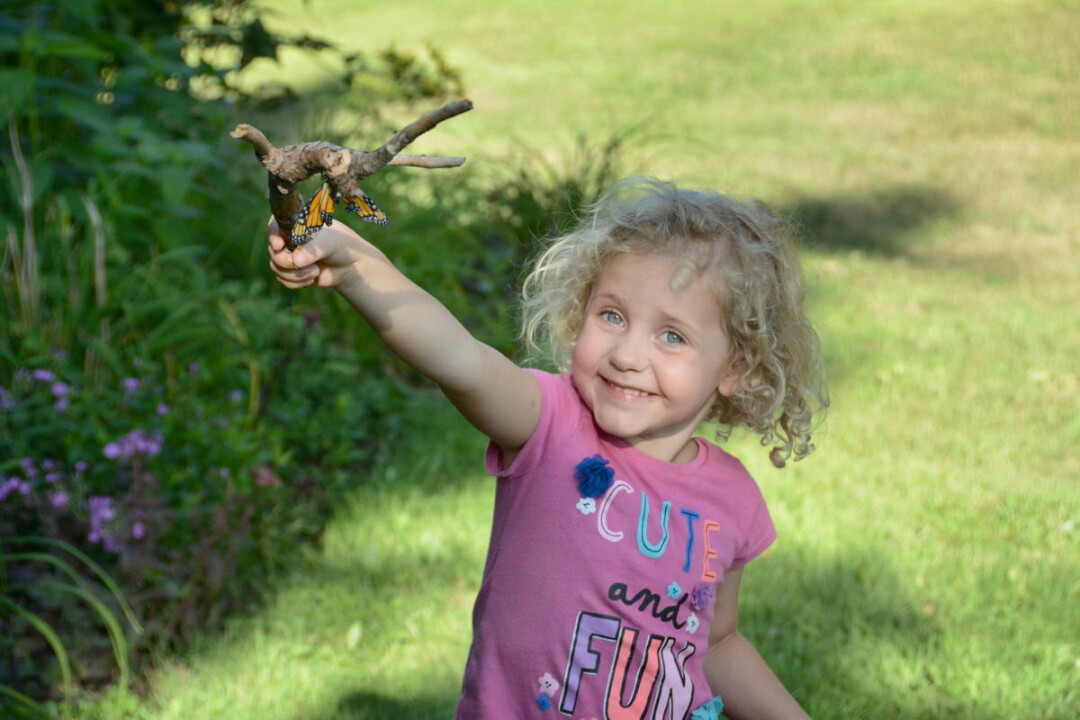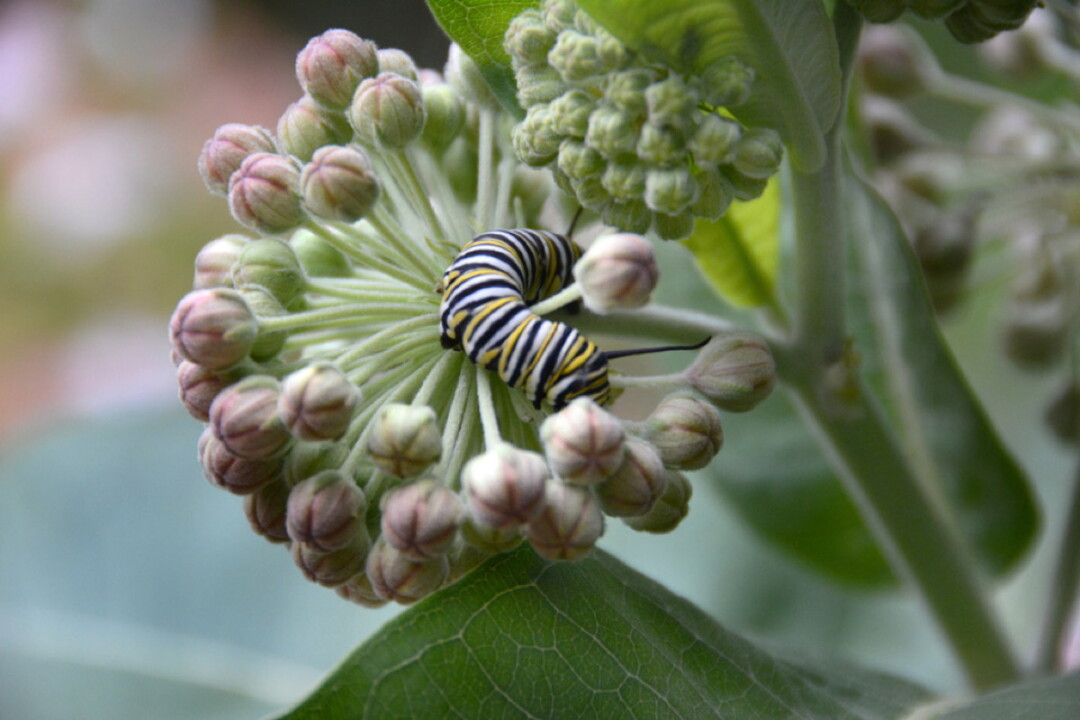Becoming a Butterfly’s Best Friend: Raising Monarchs Offers Kids Lessons on Biology and More
Tom Giffey, photos by Conrad Leighton |

My family already has two cats and a dog, but the number of “pets” in our home always increases exponentially during the summer.
The additional critters don’t stay in the household long: They are monarch butterfly caterpillars, harvested from the milkweed plants in our yard and carefully raised through the stages of their lives, from caterpillar to chrysalis to adult butterfly ready for release.
Ideally, within a few weeks, the tiniest of caterpillars become full-grown adults ready to go forth, pollinate plants, and lay eggs of their own.
Besides keeping our children, ages 8 and 4, busy and away from a screen during the long days of summer vacation, raising butterflies offers numerous lessons and benefits. There are the biological lessons, of course: Raising butterflies teaches kids about the life cycles of insects. Each life stage and transition offers an opportunity for education and wonder. Children can also learn about the monarch’s role as a pollinator of plants and about how its unique diet helps protect it from predators (all that milkweed fills their bodies with icky-tasting toxins). Fostering butterflies also teaches kids the responsibility involved in caring for another living thing, as well as about life and death on a small scale.

A ‘WEED’ IN NAME ONLY
Inspired by some friends who enjoyed raising caterpillars with their own children, we began to search for monarch caterpillars on milkweed leaves a couple of summers ago. At first we kept the striped caterpillars (which are the larval stage of the insect) in glass jars with holes poked in their lids. Soon, my wife purchased a small, clear plastic cage with a ventilated lid and a feeder window, which made caring for the growing insects easier. We provide our tiny pets with some sticks (which provide somewhere to perch during the chrysalis stage) and lots of milkweed leaves.
We’re lucky enough to have milkweed growing in our yard thanks to the foresight of our home’s previous owner. Monarch populations have plunged in recent years, a trend that has been attributed to habitat loss: There simply isn’t as much land filled with native plants – including milkweed – as there used to be. This has prompted efforts in Wisconsin and elsewhere to plant more milkweed, so if you look around you may find it growing in gardens, parks, fields, and along fencerows. (Be sure to ask before picking it if you’re on private property!) At my son’s elementary school, for example, there’s a plethora of milkweed growing around the edges of the property.
Milkweed is essential to the monarch’s life cycle: It is where they lay their eggs, which with in a few days hatch into tiny, translucent caterpillars. Milkweed also provides the caterpillars with their food. Every day in summer, my children carefully inspect each plant, searching for newly hatched caterpillars – or, if they’re really lucky, for the almost impossible-to-see monarch eggs. They also pluck a handful of milkweed leaves to feed to our caterpillars. It’s amazing to see a full-sized caterpillar – which can be 2 to 5 centimeters long – eat its way through a sizable leaf over the course of a day. All that eating means a lot of excreting, too, so be sure to carefully clean your monarch container every day or two. Carefully remove the leaves and sticks, then dump out the critter droppings. (It helps to line the bottom of your container with paper.) My 8-year-old son says the most difficult part of cleaning is taking care not to disturbed chrysalises. He also advises to carefully count your caterpillars before and after you clean their container to avoid accidentally throwing any out with dried-up, munched-on leaves.

HANGIN’ TOUGH
After nine to 14 days, the caterpillar – which until this point has done almost nothing but eat and grow – is finally ready to just hang out (literally) and complete the final stage of its metamorphosis. If you’re lucky, you’ll be able to watch as the caterpillar selects a place to “pupate,” spins a little silky patch to hang from upside-down in a “J” shape, then sheds its skin for the last time to reveal a blue-green pupa or chrysalis. (Technically speaking, this isn’t a cocoon because it lacks a silky wrapper.)
Within another week or two of waiting, the adult butterfly emerges from its now-transparent chrysalis. After a few hours, its delicate wings have unfurled enough to fly. At this point, we typically coax the butterfly onto a stick – if it isn’t on one already – and gently take it outside to fly free. For my kids – as well as for my wife and I – this is the most exciting part of the process. Watching a butterfly re-enter the natural world makes those weeks of leaf-picking and cage-cleaning worthwhile.
With any luck, the butterfly will survive to continue the species’ life cycle. In early summer, the butterflies may live only a few weeks. If they’re born later, however, they may be lucky enough to be part of the generation that migrates to Mexico and overwinters in massive, magical butterfly clusters. In any case, the butterflies you raise will be tangible examples of the beauty – and fragility – of the natural world.






















